The human parasite is called all living in his sacrifice. These are bacteria, fungi, worms. Human parasites are divided into internal and external. The most unpleasant person is the worms that destroy the most in the human body - a variety of parasites.
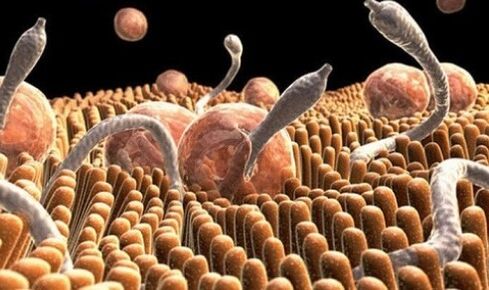
Parasites and humans
The organisms parasitized on the human body can be external or internal. External includes:
- mosquito.
- Water ches.
- Lice.
- Microorganisms that cause cabies.
However, there are more creatures who prefer to settle inside. These include:
- bacteria.
- Appropriate.
- worm.
- Fungus.
The external and internal tissue of parasites belongs to the simplest. Since they don’t need to develop for survival, their organization has been greatly simplified.
There are many creatures who prefer to settle inside. For example, it can be a bacteria.
Without a host body, they cannot survive and cannot obtain their own food. But they breed almost without exception, especially under conditions suitable for this. They didn't drive them immediately.
Territorial differences. Some can be found everywhere, and no climate is a barrier for them. Others live only in tropical countries, but can easily be brought to anyone else on humans. Inside the body, they also settle in different places.
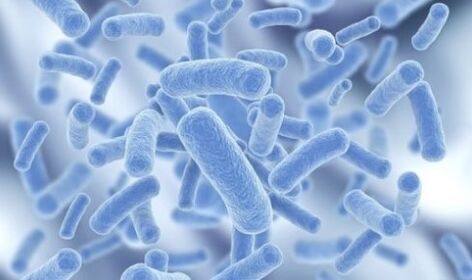
The cycle of parasite development is mainly the cycle of worms. Some initially develop on the ground (one third of the biological HM) and then move to the living creature. Others must first develop within the body of any other organism, not one. Third, in adult status, you can transfer to another state or reinfect yourself.
Assume that infection may occur only through dirty hands. The eggs of certain worms are feasible for six months outside of nutrient medium and are perfectly glued to animal wool. Eggs survive dangerous environments - it's worth cooking meat or fish incorrectly, as the whole worm can pay.
Worth not properly cooking meat, how to pay for the whole worm in your body.
One's endoparasitic
Parasites are divided into endoparasitics and ectoparasitics. Inner plants - those who settle inside, outside - outside. Endoparasitics are able to settle in almost all internal organs and body tissues. According to localization, they are assigned. Endoparasitics are:
- The external environment connected to the internal organ endoparasitics.
They settle precisely in organs connected to the external environment, and vice versa: the parasite is not selected as "breathing". Such organs include the intestine, light, human urine system. These are amoeba, worms and burning parasites.
- Parasite.
Placed in human blood. They can live in plasma, white blood cells, red blood cells. These are tritetrabody, trace flux or alveolar worms.
- Fabric endoparasitic.
Those endoparasitics that choose body tissues in their place of residence. Muscle tissue, brain, cartilage, connective tissue. Even in nerve fibers, endo-tissue parasites can settle. These are the fins of ribbon worms, triploids, mucosporidium, Trichina, etc.

Endoparasitics can choose the brain in their place of residence.
It is very conditional to determine the types of multiple parasites when determining their location. Many species are able to migrate to various internal organs, traveling regularly to owners' bodies. The transmission process can occur in one place, and the organism will feed directly and feed in another place. Where a parasite is reasonable, it will be considered as the location where its conditional position is located.
Despite simplifying many parasite systems, their life cycles are still complex.
Certain breeds that survive for a lifetime must change several owners who may be associated with different biological species. Others can only survive in one of the biological species, but may require an intermediate host. In one person, they breed, while the other develops and grows. With such a complex life cycle, their sexual function increased significantly. It is necessary to survive quickly and in large quantities in the human body.
worm
There are three main worms, also known as worms. this:
- Nematodes, they are round worms.
- Cestodes, tape-shaped endoparasi.
- Trematodes, also known as saucers.
Next, they can be separated by the life cycle and the number of locations passing along this road. There are three types:
Earth molecules.
"GE" is the earth. These worms can only infect a person in the maturity stage and begin to exist in the earthly soil. They don't need intermediate hosts, eggs and human feces fall into the soil. By the larval stage, they develop only in the warm seasons.
Such worms include Forrest Gum, intestinal Ugris, non-core and Big Bang.
The larvae of these parasites can enter the body through unwashed vegetables or come into contact with the soil directly.
Biospiral.
These are parasites, and the stages of life pass through several owners. Depending on the type of worm, the intermediate hosts can be two or more. Some parasites completely change a person. Before finally entering the human body, others are used for development by other biological organisms.
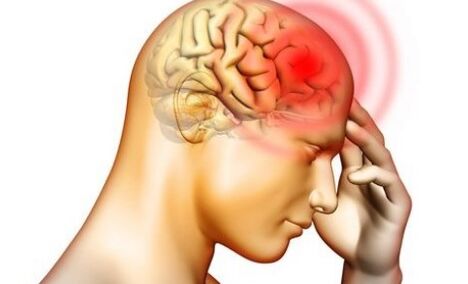
You can get infected by pets or contact with others, or when you eat semi-dry meat. Biospirochetes include bull tapeworms, echinococcus, wide tape, Trichina, etc.
contagioine helminths.
These worms do not require any soil or intermediate owners. They pass through all stages of their life cycle in a very comfortable organism. When in contact with family surfaces and others, the larvae stand out directly from the human body and spread freely.
The helmsman can live in different organs and systems of the human body and regularly migrate from one part of the body to another.
The list of diseases caused by worms is very extensive. Determine which parasites live in the body and which treatments can only be started after all analyses have been performed through all analyses.
Round worm
The most common in human environments are round worms, also known as nematodes. In general, there are more than 24, 000 nematodes in the world.
Their shape is round and can be detected if you cut horizontally. The most common nematodes in humans:
- Askarids.
- Speaker.
- Trichner.
- Blacovyv.
Worm invasion, known as asworm disease, begins with direct contact with soil infecting larvae or using unwashed fruits and vegetables. The parasite begins to develop in the intestine and then enters a person's circulation system, from there, into different internal organs, and head to the mouth. A person, not noticing this, repeatedly swallows adult parasites. They feed on the remains of undigested food. The waste of assworms is extremely toxic. There is no vaccine in cancer, and infection can be prevented by observing personal hygiene rules.
Pinworms infection is called enteritis. These are small worms (5-10 mm) attached to the intestinal wall. They feed on blood and intestines. They put the eggs under their skin and get out of the outside anal opening while their owners sleep. Due to itching, a person grooms the anal area, and the larvae fall under the skin and hands, and is easily transferred to other people in a house or in public places. Enterovirus has no symptoms of pain, and detecting PIN worm infection in the initial stage is very problematic.
Trichinella, they are Trichina, these are round worms, and they choose animals or humans with their owners.
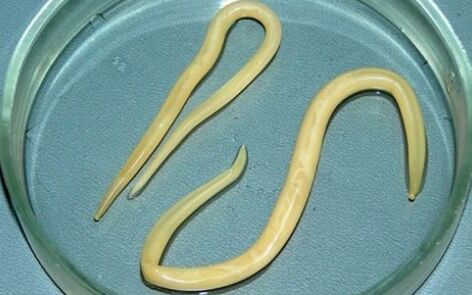
Trichinella is a parasitic worm that affects the human body, causing dangerous trichinellosis disease.
They begin to develop in the area of the body's trans-striped muscles and then redirect to the small intestine. In late-stage cases of infection with muscle tissue, approximately 15, 000 hairy pellets can be found. These parasites cause fatal diseases, named after their source - Trichinellosis.
Because of its appearance, it is called the round worm of Blazovians. The front of their bodies are filaments that contain an esophagus.
The back is wider, and the rest of the parasite's internal organs are located in it. The length of combustion can reach 50 mm. It feeds on blood and tissue fluid. Diseases that cause cerebral disorders.
Ribbon worm
In the world, there are about 3, 500 famous banded worms, whose types are also called Cestodes. These flat worms do not have a digestive system at all, and the disease they cause is called Cestodosis.
The most common cestossis:
Cystic.
The larval disease of the pork tapworm is very excited, entering the contaminated food from its dirty hands.
The disease affects the skin, bones, internal organs, brain and spinal brain. In most cases, parasites are sent to the brain (in 60% of infection cases). It is diagnosed based on the appearance of a circular formation on the skin. In the case of infection with the central nervous system, the disease has been treated and the prediction may be unfavorable.
Echinococcus.
Located in the liver, lungs, and many other internal organs. The eChinococcus larvae stimulated the disease. They can develop within a person for years.
Infection occurs in contact with animals, collecting berries and fruits, and consuming contaminated water. The disease is not too obvious, can develop for many years and can only be revealed by accidents.
Alveolar lens.
Alveolar disease is caused by pneumococcal . The disease is similar to echinococci disease, but is more severe. It affects the lungs and kidneys. Without the treatment of the disease, there are great fatal consequences for the development of liver failure.
Toniarynchosis.
Tusiarinchosis is caused by cattle chains. Parasitic tapworms in the small intestine area develop for 2. 5-4 months. Predictions are usually more beneficial for treatment. Parasites can enter people with primitive or insufficient hot meat.
Ribbon worms are very fertile. They have the greatest sensitivity and have no digestive system at all. Without an owner, this parasite will not be able to develop.
Sosal Worker
The highest is Tremontodes. These are flat worms whose bodies are shaped like rectangular leaves of trees.
Certain types of Trematodes can reach a size of one and a half meters.
They find themselves in the human body, usually through fish or other seafood. There are about 7200 types of ammunition known, of which 40 settle in humans and cause huge diseases, which are serious diseases caused by infection.
The most common salary:
liver bicom.
Globally, it can exist in animals and humans. The life cycle of biological is complex and parasites change owners.
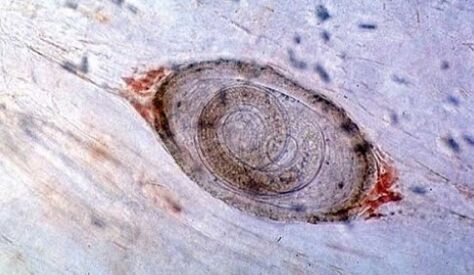
Schistosoma .
Schistosoma larvae can penetrate the skin or mucous membranes. The life cycle is complex and feeds on blood. A female is able to produce about 3, 000 eggs per day, and these parasites have high fertility.
Other liver bale.
Isorbia, helminthosis, is mainly distributed in the liver area. The human body has toxic effects.
The digestive system of worms is developed, with gender and excrement. The rest of the systems have poor development. Tremontodes feed on blood, epithelial cells, and intestinal content. They can live almost anywhere: from the liver to the eyes of the eyes.
Other types of Nebasians
The rest of the internal parasites are a variety of bacteria that cause dangerous diseases and have the simplest microorganisms. Fungi scattered inside the human body also refer to the part of endoparasitic organisms.
Many useful and harmful microorganisms live in the human body. Some of these cause very dangerous diseases that can lead to death. It is not always possible to recognize the presence of parasite organisms inside yourself immediately, but early diagnosis of infection gives more chances of healing. If invasion is suspected, a complete doctor's examination is recommended.

























